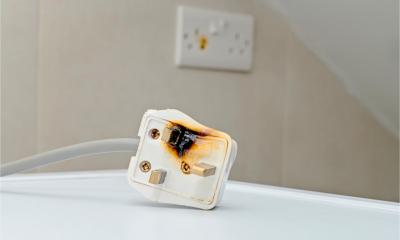
Many employees rely on IT equipment and mobile devices to complete their work. It's important your business meets all relevant display screen regulations
Display screen equipment (previously known as 'visual display units') can pose a number of possible health and safety risks. In the UK, the Health and Safety (Display Screen Equipment) Regulations 1992, mean you have a responsibility to assess and minimise these risks.
What counts as display screen equipment?
Display screen equipment (DSE) is any device that has an alphanumeric or graphic display screen and can include computer monitors, laptops, tablet computers, touch screen equipment and smartphones.
Display screen regulations: the risks
Regularly working with DSE can pose a number of risks to your employees. They may complain of eye strain, fatigue or headaches. They may also suffer from back or upper limb disorders.
The risks can be caused by glare from the display itself or by poorly designed workstations and unsuitable office furniture, resulting in poor posture. Employees using laptops or other portable equipment can also suffer manual handling injuries if not suitably trained.
When do display screen regulations apply?
Display screen regulations apply to 'display screen users'. This means any employees that use DSE, including computer monitors, tablets, laptop computers, touch screen equipment or any other alphanumeric or graphic display screens for a significant part of the day. Users are covered regardless of where they work, including at home or mobile workers such as sales representatives. The rules apply whether you supply the whole workstation or not.
In practice, users are those who use DSE on a daily basis and continuously for more than an hour at a time. However, if you have employees who use DSE less frequently, it may still be worth considering the risks they might face and taking steps to minimise them.
Limits on the use of display screen equipment
There are no legal limits on how long DSE users can use the equipment each day or how long breaks should be, but you should take into account the nature of the work being carried out by DSE users and plan for regular breaks in the working day.
The Health & Safety Executive suggest that frequent short breaks (5-10 minutes every hour) are preferable to longer, more infrequent breaks (20 minutes every two hours). Ideally your employees should have some choice over when to take these breaks as no two workers are the same. Most jobs will have some natural breaks where employees can get up, stretch and give their eyes a rest from the computer. Where employees do
You should also bear in mind that although specific rest breaks are not specified under the Health and Safety (Display Screen Equipment) Regulations, workers are entitled to minimum rest breaks under the Working Time Regulations.
What steps do the display screen regulations say you should take?
Under the regulations, you are required to carry out a risk assessment if you have DSE users in your workplace. If your employees regularly use display screens, you must:
- analyse employees' workstations for possible risks and minimise those risks as far as is practicably possible;
- make sure controls are in place to the minimise risks;
- provide safety information and training;
- provide eye and eyesight tests on request, and any special spectacles required; and
- review your risk assessment when the equipment or user changes.
You should include assessment of display screen risks in your normal risk assessment (which must be in writing if you have five or more employees) and assess any special requirements of individual members of staff. This practical checklist from the HSE website - with visual examples of good and bad practice - can help you assess and minimise the risks posed by the use of display screen equipment.
Once you have identified the risks, you must take steps to remove or minimise them as far as possible. The steps you take can be as simple as making sure all employees take regular breaks away from their desks, providing all employees with ergonomic furniture or replacing old monitors with newer, adjustable models.
Read guidance on how you can minimise the risks of using DSE from the Health & Safety Executive (HSE).
You can also download a guide from the HSE on what you must do if you have display screen users in your business (PDF).
Reassessing the risks
You should not assume that once you have completed your assessment that the job is done. The risks can change and new risks can arise whenever new equipment, working practices or employees join your company. You should monitor the risks on an on-going basis and take any steps to keep them under control. Always keep display screen regulations in mind when purchasing equipment and bringing in new members of staff.
You should also reassess the risks if there is anything to suggest that existing measures are no longer working. For example, if employees start to complain of eye ache, headaches or upper limb disorders.
Training for display screen equipment users
It is advisable to provide information and training to help employees keep themselves safe at work. This could include information on how to adopt good posture, adjust furniture, lighting and equipment to suit their own personal needs and ensure they take regular breaks. You should also inform your DSE workers about their right to paid eye and eyesight tests. Employees should also be informed about how they can report problems such as faulty equipment and furniture or health problems.
Eye tests for display screen users
If a DSE user asks you to, you must pay for a full eye test by a qualified optometrist or doctor. If the test reveals that special corrective appliances (normally spectacles) are required for the distance the screen is viewed at, you must pay for the equipment required. If an ordinary prescription will suffice for the employee's DSE work, you do not have to pay for the equipment.


